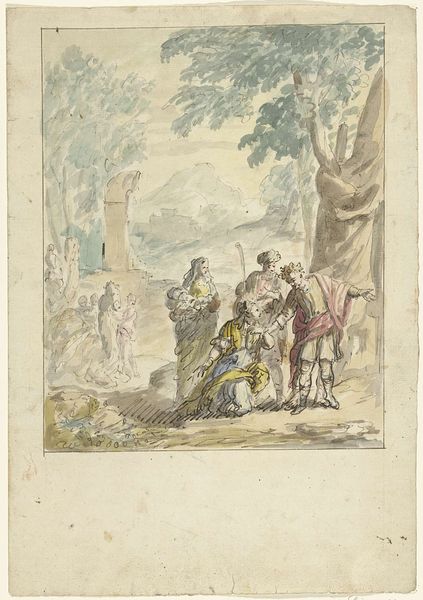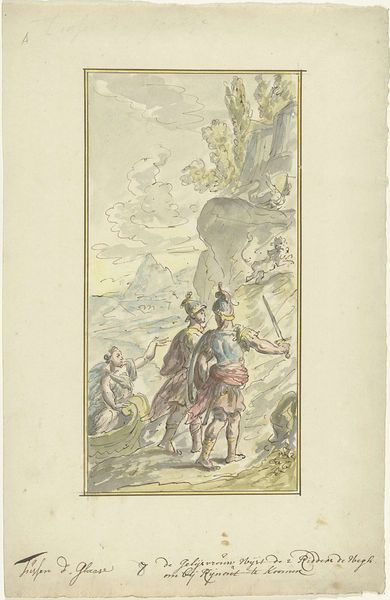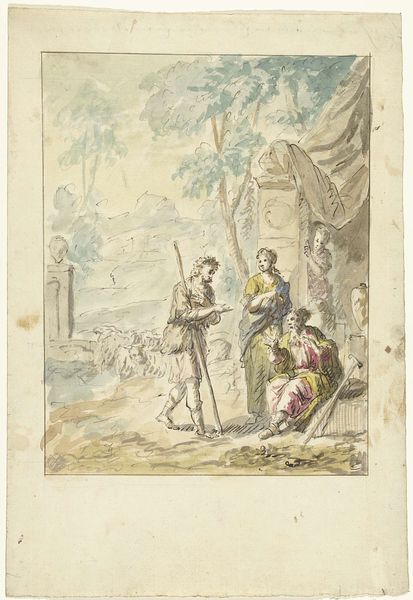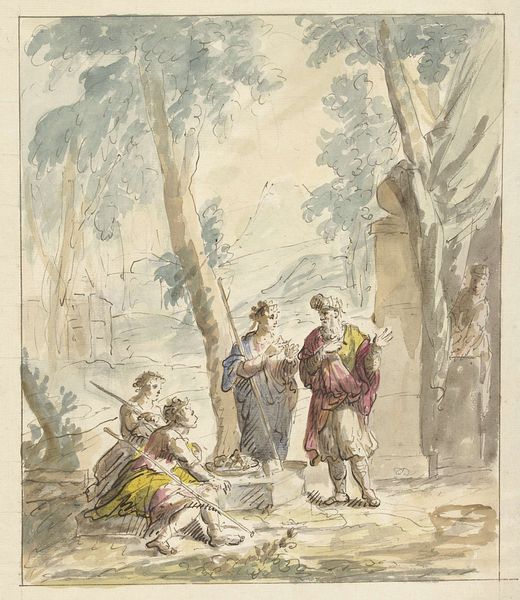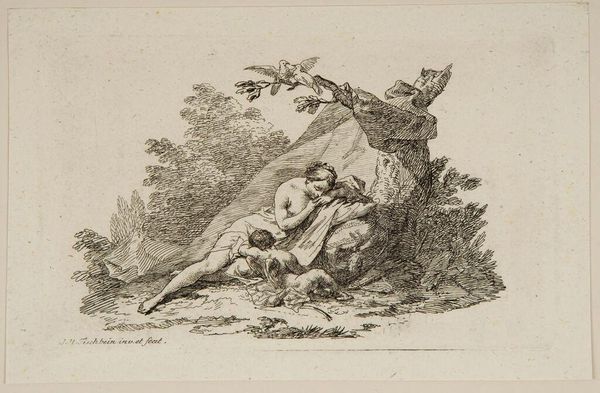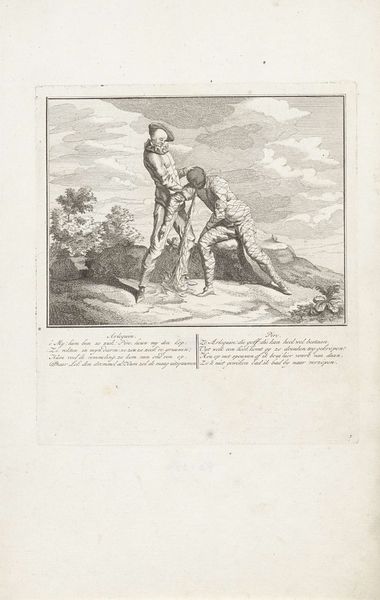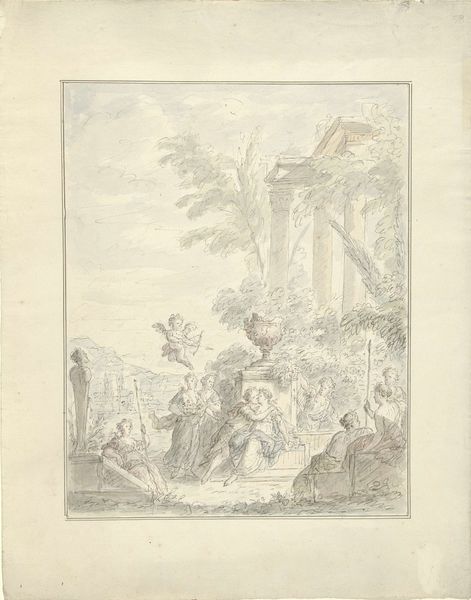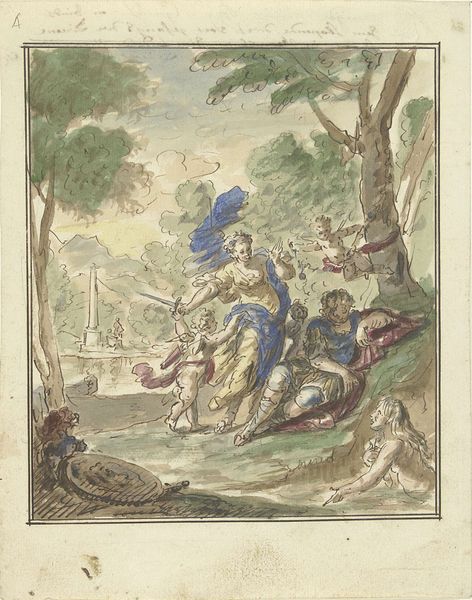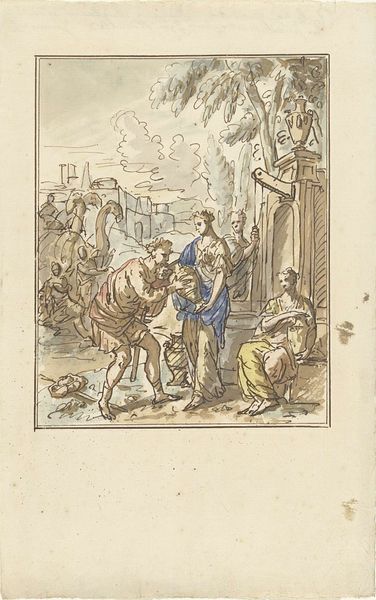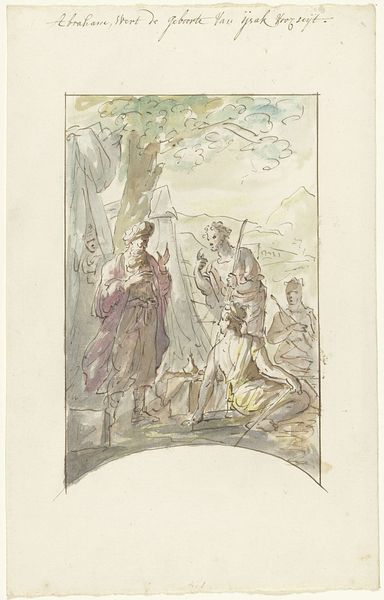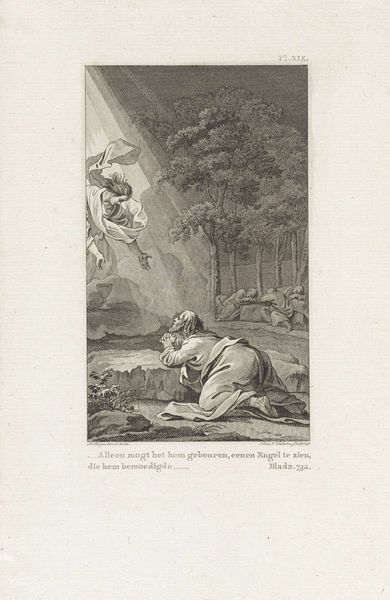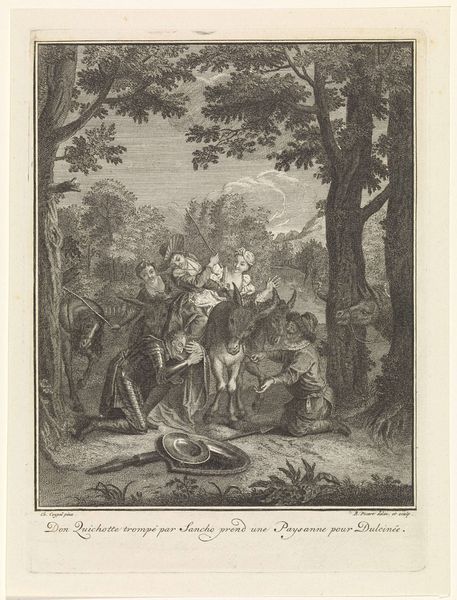
drawing, watercolor, pen
#
drawing
#
baroque
#
landscape
#
figuration
#
watercolor
#
pen
#
watercolour illustration
#
genre-painting
#
watercolor
Dimensions: height 380 mm, width 245 mm
Copyright: Rijks Museum: Open Domain
Curator: Elias van Nijmegen's "Perseus bevrijdt Andromeda", created sometime between 1677 and 1755, presents us with a dynamic scene rendered in pen, watercolor, and drawing techniques. What strikes you first about this artwork? Editor: Immediately, it's the tentative quality of the watercolor washes—everything feels delicately balanced, a bit ethereal even though the subject matter is so overtly heroic. The rocky landscape reads as intentionally raw and unpolished. Curator: Exactly, look at the paper itself—it's integral. The artwork embodies a baroque sensibility within the conventions of the period's drawing practices. It wasn't unusual for studies like these to explore compositions meant for larger history paintings, often intended to adorn opulent domestic interiors. Considering the economic conditions of the era, the sourcing of materials such as the watercolor pigments is really of interest to me here. Editor: Thinking about that societal context, it makes me consider Andromeda's position in the composition. Her vulnerability, positioned precariously on the rocks, highlights the precarious position of women within patriarchal structures, depending on a man, Perseus, for her very liberation. It really underscores the reliance on male agency to overcome these imposed challenges. The gaze definitely seems to belong to a privileged viewer, an audience used to consuming narratives of male heroism and female submission. Curator: Good point. You see how Van Nijmegen skillfully renders the musculature of Perseus, drawing the viewer's attention towards his physique and equipment, drawing out attention towards that aspect. Also consider that the materiality connects the piece to the network of artisan studios producing similar imagery for consumption by a rising merchant class in urban centers. There were studios pumping this sort of imagery out regularly. Editor: It brings forth the broader dialogue of cultural appropriation that continues to surround the classical myths within a Western context. Are we truly celebrating empowerment or perpetuating an ideological framework of dependency when Perseus comes to the rescue? Curator: The raw, almost hasty application of media speaks to a piece in progress. In the details—or lack thereof—we discover an interesting insight into the practical processes in baroque art making. Editor: It definitely encourages dialogue about art's function during periods of immense social stratification, gender bias and economic tensions. Curator: In any case, viewing this landscape, through form and content, helps us re-evaluate baroque aesthetics. Editor: It surely encourages discussions around gender, race and class.
Comments
No comments
Be the first to comment and join the conversation on the ultimate creative platform.
